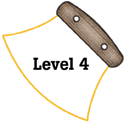
Alaska Science
Key Element A4
 |
Alaska Science |
|
Performance Standard Level 4, Ages 15–18
|
|
|
|
Sample Assessment Ideas
|
Standards Cross-References
|
||
|
National Science Education Standards Heating of Earth’s surface and atmosphere by the sun drives convection within the atmosphere and oceans, producing winds and ocean currents. (Page 189) Global climate is determined by energy transfer from the sun at and near the Earth’s surface. This energy transfer is influenced by dynamic processes such as cloud cover and the Earth’s rotation, and static conditions such as the position of mountain ranges and oceans. (Page 189) |
Benchmarks Life is adapted to conditions on the Earth, including the force of gravity that enables the planet to retain an adequate atmosphere, and an intensity of radiation from the sun that allows water to cycle between liquid and vapor. (Page 70) Weather (in the short run) and climate (in the long run) involve the transfer of energy in and out of the atmosphere. Solar radiation heats the land masses, oceans, and air. Transfer of heat energy at the boundaries between the atmosphere, the land masses, and the oceans results in layers of different temperatures and densities in both the ocean and atmosphere. The action of gravitational force on regions of different densities causes them to rise or fall and such circulation, influenced by the rotation of the Earth, produces winds and ocean currents. (Page 70) |
|
Table of Contents | Return to Alaska Native Knowledge Network